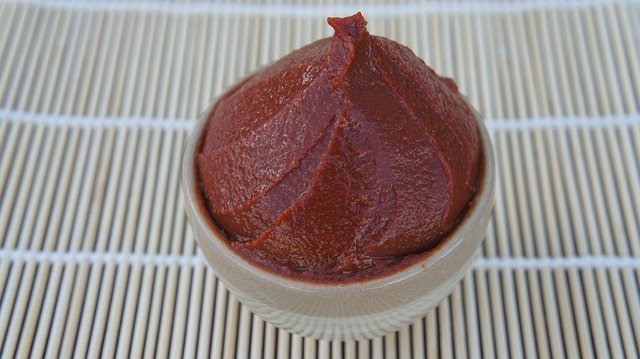
Used as a seasoning for soups and broths but not only, miso is an exceptional ingredient with countless properties.
In Asia, miso represents a cult dish of the culinary tradition, omnipresent on the tables on a par and perhaps even more so than our pasta. Those who love Japanese cuisine and usually frequent its restaurants, will certainly have noticed how the menus always offer miso soup, especially as an opening for a meal, as if it were an aperitif. But what, specifically, is miso? And why is it so precious in the East and in particular in Japan, but not only now?
What is miso
Miso is a very, very ancient condiment, of all natural origin and deriving from the fermentation (up to two years and operated by the Aspergillus oryzae mushroom) of yellow soybeans and sea salt, to which cereals such as barley and rice. Miso can therefore be composed of only soy (Hacho miso), soy and barley (Mugi miso), rice and soy (Kome miso).
The appearance of the Miso is that of a brown “paste” reminiscent of the common and western classic vegetable nut, also for the method of use. The savory and highly aromatic taste of miso make it ideal for enriching many dishes, but it is above all the qualities and the great and numerous benefits of miso that in Japan have coined the expression “miso sae areba”, “everything is fine until what’s miso for”.
Miso: properties and benefits
Miso is rich in many enzymes and live enzymes (such as yogurt), thus becoming a precious ally for intestinal well-being, for improving digestion and strengthening the native bacterial flora.
Miso is an exceptional food for its high content of all vegetable proteins, therefore without the contribution of cholesterol and animal fats, which makes it suitable for practically everyone and especially for vegetarians and vegans. Specifically, the proteins are of high biological value and very digestible, but not only: miso contains 8 essential amino acids. Not bad, I would say.
Not just proteins: miso is also a concentrate of mineral salts that balance the metabolism and perfect the appearance of skin and hair, of B vitamins, which have a protective action on the nervous and epidermal tissue, and have a strong action alkalizing, given by the abundance of Calcium, Magnesium, Sodium. Furthermore, the alkalizing action of miso is also ideal for counteracting a diet that is particularly acidic or too rich in meat.
The content of lecithin and linoleic acid gives miso the function of “scavenger” of blood vessels, favoring the lowering of blood cholesterol levels and the risk of atherosclerotic diseases. For this reason, miso can easily be used in the diet of heart patients or for stroke prevention. The high salt content, on the other hand, makes it unsuitable for use in case of hypertension.
Miso of soy, rice and barley: characteristics and differences
As we have said, miso is a flavoring that is obtained from the fermentation of soy and / or cereals. Therefore there are different types, the most used are:
- Soy miso: it is pure miso produced only with soy and salt, it has an intense flavor and is very salty. It is the most difficult type of miso to dose and use in recipes, therefore it is recommended to add it gradually to dishes;
- Rice miso: it is the most popular type of miso and is produced with soy and rice, has a lighter flavor than soy miso and is used for the preparation of sauces, dressings and soups;
- Barley Miso: made with salt, soy and barley, it has a delicate flavor. It is the miso par excellence, in fact it is used for the preparation of the classic miso soup.
Miso: how to use it in the kitchen
Miso is usually used in addition to hot dishes such as soups, broths, risottos, but also for the preparation of sauces (dissolving it with a little hot water or broth) to emphasize the flavor of meat and fish.
The advice is to use only a teaspoon of it (it is more than enough) and to incorporate it into the dish at the end of cooking, until it melts: it is important that the miso is not boiled in order to avoid the loss of its live enzymes, preferring that of biological origin to pasteurized miso. At this point … enjoy your meal!
Miso: contraindications
The main contraindications of miso are due to the high salt content, and therefore sodium. Therefore it is good to pay attention to its consumption especially in case of hypertension or kidney problems. Also, miso could aggravate the symptoms of gastrtitis and, therefore, make heartburn worse. In these cases it is advisable to add a small quantity of miso and evaluate its individual tolerability.






